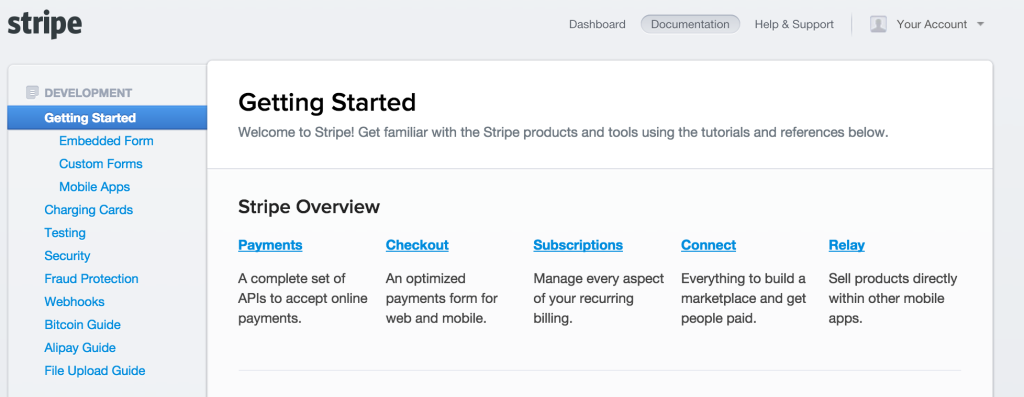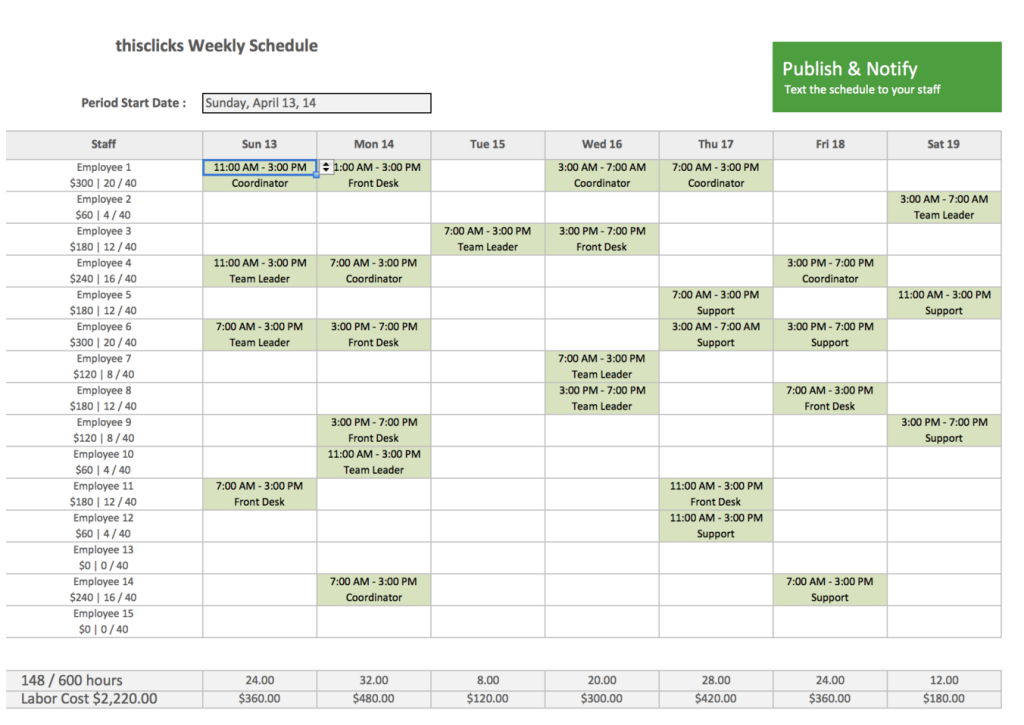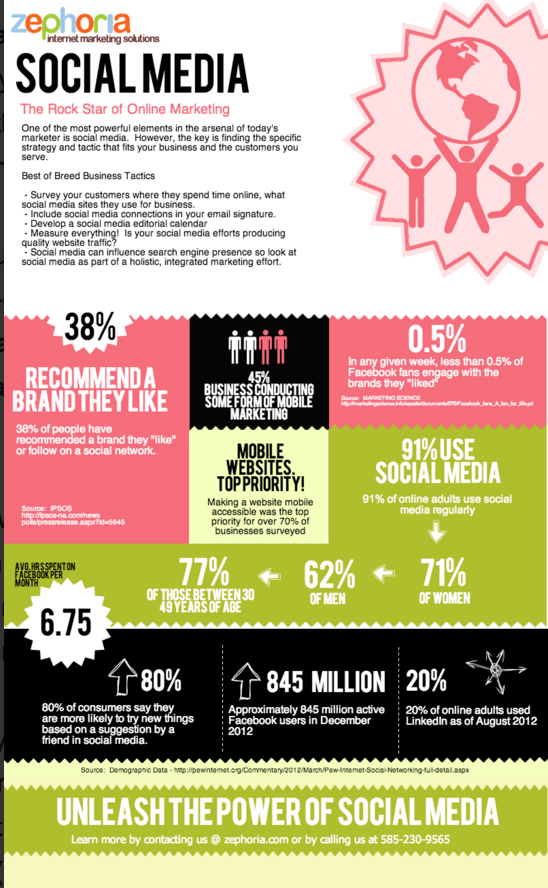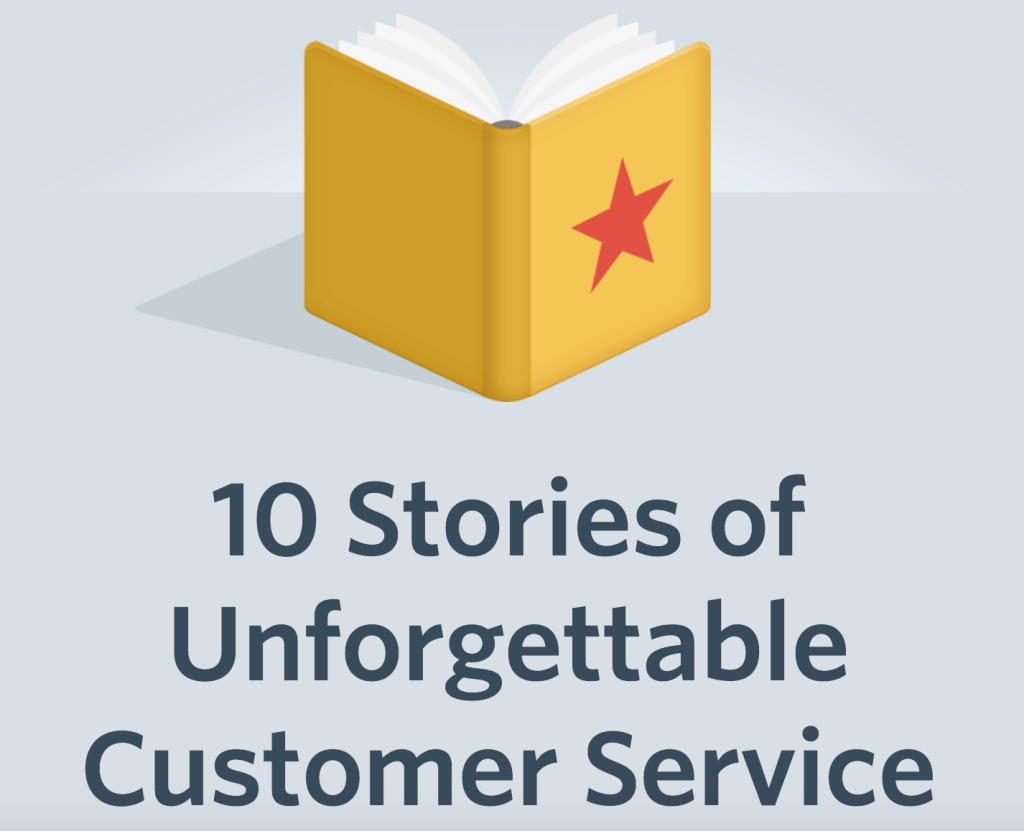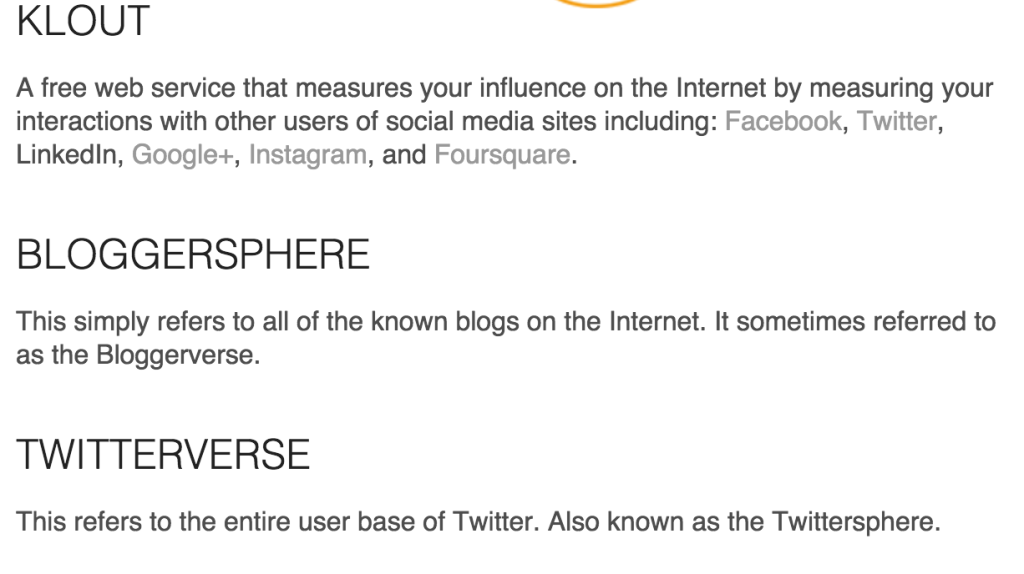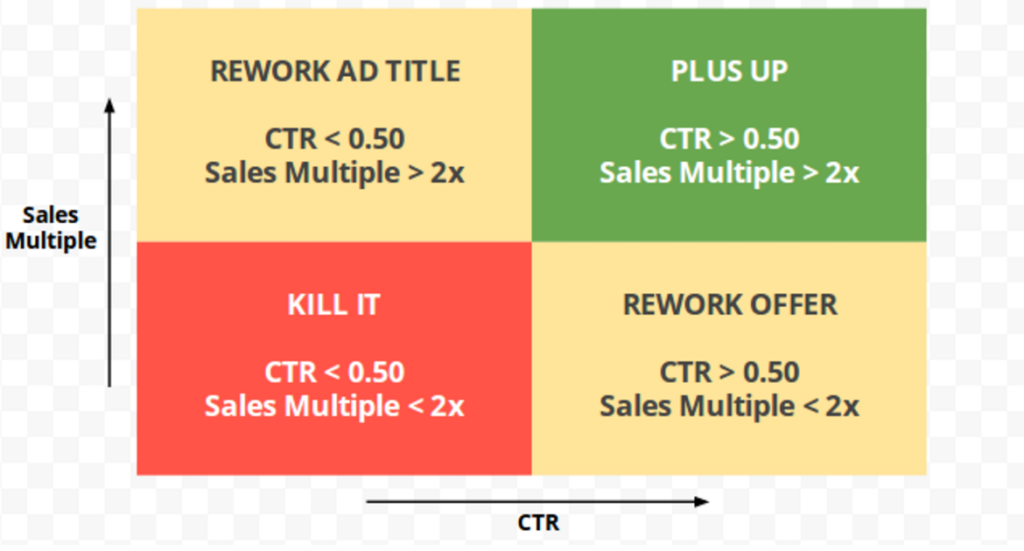The #1 problem I see with content is that it doesn’t have any staying power. What I mean is that you hit “publish,” then do some promotions, list your new piece in forums etc. The first day or two you get some hits, and then…crickets.
That’s kind of contradictory to the whole point of content marketing, which is to build up an audience over time. Today we’re going to like at 47 different content ideas that last, meaning that they’ll continue driving traffic long after the initial social spike.
TL:DR – Evergreen content solves a problem or answers a question for the reader. There are lots of problems that remain consistent over time, and posts that help with those issues are evergreen.
#1: Be a Journalist in Your Industry.
How this works: Actually be an investigative journalist around your specific niche of the world. With brands becoming publishers we have a responsibility to report on things just like traditional publishing houses do. You can also use this as an excellent opportunity to establish yourself as an authority in the minds of prospects, and according to the 22 Immutable Laws of marketing, whichever brand establishes themselves as the thought leader ends up with the business.
Example: A company called Flexport shows us exactly how this is done with their article on why Dole owns their own fleet. It’s a very interesting piece that interests anyone who lives near a port and sees giant “Dole” branded ships and trucks. (The reason it’s interesting is because almost no other company has their own ships). The piece Flexport wrote is filled with facts and answers an interesting question about why Dole has branded stuff everywhere.
Results: 44 Social Shares, #4 ranking for “Dole Ships” (10 visits a month).
#2: Interview an influencer in your field
How this works: Asking questions of someone who has done well can reveal some very unique insights into specific processes that might not otherwise come to light.
Example: Kristi Kellogg did a great interview with Rand Fishkin where she’s able to ask questions and get honest answers in real-time. Lessons learned by successful people are coaching moments for anyone trying to follow the same path, and getting the opinion of someone who’s “made it” can make a difference.
Results: 77 social shares, #1 ranking for “Rand Fishkin Interview” (25 monthly searches)
#3: History of your business/industry
How this works: There are a lot of good stories wrapped up in the history of something, and you can tell that story to build yourself up in the minds of potential customers. Also, history tends to repeat itself if not learned from, so you can do your audience a favor by making sure they know what others have done in the past.
Example: Build Direct created this awesome, long-form piece on the history of couches – something we all use pretty much every day but think nothing about. It’s an awesome article for anyone to read, and is great for anyone who is searching for terms around couches because Build Direct can help with all furniture needs.
Results: 89 shares, #2 ranking for “history of couches” (10 monthly searches)
#4: Tools to Complete a Specific Task
How this works: There are “stacks” of tools for completing many jobs – from starting a blog to email marketing, to coding. By providing people with a list that covers all the bases, you take the difficulty of searching around for all the tools out of the issue. This is especially great if you can get on people’s radar right when they’re getting started.
Example: The Daily Positive set up this list of tools for starting a blog. I love this because it provides everything you need to actually get a blog set up and running. It’s practical, helps the reader solve a specific task, and establishes you as an authority.
Results: 12,520 shares, Search ranking N/A
#5: Best practices on a complicated topic
How this works: Just like a list of tools is essential for building something, there is also a best way to get the task done. By providing a list of best practices on how to get a job done, you can provide tremendous value and save your audience a ton of time on trial and error.
Example: Jimmy Daly at Vero create the most comprehensive list of email best practices and put it up for the world to use. It’s really more like a book than a blog post, and that’s what makes it so useful.
Results: 862 social shares, #2 ranking for “Email marketing best practices” (1,600 monthly searches).
#6: Set of docs on how to use your product
How this works: Docs are not primarily for acquiring customers, but they can be used for bringing in new people.
Example: Case-in-point, Stripe has some of the very best documentation around for setting up payments on your site (which used to be really difficult).
Results: 225 shares, #5 ranking for “How to accept payments” (20 monthly searches)
#7: Customer-Written Article:
How this works: It’s very powerful to get the perspective of someone who uses your product day-in and day-out, and they most certainly have a different take on it than you do as the company. Partnering up with your customers to create content is an excellent way to produce content that speaks to other potential customers, who are your audience.
Example: This example is from Interact. We worked with one our customers, The Foundation, to produce a great article on how they’d used Interact + Facebook ads to generate leads. The piece gets into strategies behind Facebook advertising in general as well, which is what produced the ongoing results.
Results: 112 Social Shares, 50 visits a month
#8: Extended FAQ’s Turned Into Content
How it works: There is something called the 10x rule when it comes to questions your prospects ask. The 10x rule states that if one person asks a question, there are 10 more who have the same question but just haven’t asked or don’t actually know they’d like the answer to the question. Extending FAQ’s into full, in-depth blog posts is a great way to capture the other 9 who don’t reach out and ask.
Example: Pardot created this great post that answers some common questions around content marketing, they go beyond just one-sentence answers and actually explain why things work the way they do, it turned out well for them.
Results: 108 social shares, #1 rank for “content marketing questions” (20 monthly searches)
#9: “Best Examples Of” List – Must be Updated Annually
How it works: When it comes to trying things for the first time, it can be exceptionally valuable to have some guidance on what’s worked in the past. That’s why posts showing the “best in class” for a particular subject are super valuable and long-lasting (as long as you update them)
Example: Every year Kapost, a content marketing software company, puts together a list of the top 50 content marketing brands and why they are the best. It’s an excellent resource for anyone to learn from because it highlights why these particular brands stand out in the world of content marketing.
Results: 3,006 social shares, #3 rank for “content marketing companies” (260 monthly searches)
#10: Personality Quiz (Socially Evergreen)
How it works: Personality quizzes are what I call “socially evergreen” meaning that people share their results long after the content is published. To make one, just figure out how to categorize people within your product. For retail brands it’s “Which Product are You?” for non-profits it’s “Which Social Justice Hero are You?”… you get the idea.
Example: Forbes created a quiz “College Matchmaker: Find Your Perfect Fit” as part of their annual college ranking list. It was shared 700 times in 2015 and 484 times in 2015, making it truly socially evergreen.
Results: 1,184 social shares, #1 rank for “college quiz” (2,400 monthly searches)
#11: Knowledge Assessment
How it works: There are important issue related to every business. Whether that subject is content if you’re a marketer or Iran if your’e a non-profit focused on helping entrepreneurs in Iran – there are always going to be important issues attached to any company. To take advantage of the quiz format, create an assessment testing people on how much they know about one of your core issues.
Example: A great representation of this comes from Berim, a small non-profit helping social entrepreneurs in Iran. They created a quiz “How much do you Know about Iran?” because that’s core to what they do and an on-goingly controversial topic.
Results: 918 social shares, #5 search ranking for “Iran quiz” (10 monthly searches)
#12: Webinar on Your Product’s Core Value
How it works: The best way to describe this one is like a product video combined with a how-to, mixed with a bunch of free advice. Typically these webinars are an hour or longer, and really go in-depth, with more than enough time to provide really valuable tips to your audience.
Example: Curata does a great job with this type of webinar. In this example, they talk through the whole genre of content marketing and give the low-down on what they’ve learned.
Results: 48 social shares, #3 rank for “content marketing webinar” (30 monthly searches)
#13: Checklist for completing a task
How it works: Sometimes a task contains a lot of steps that need to be checked off before you can call it done. That’s where checklists come in – these are super useful tools to have when working on more complicated projects.
Example: A perfect showcase of a checklist is this website review template from WpCurve. They focus on wordpress help as a business and a checklist like this one is a perfect fit for people who are thinking about doing some work on their current online image.
Results: 91 shares, #1 rank for “website review template” (90 monthly searches)
#14: Template for a complicated part of your day
How it works: We all have the more tedious tasks of the day. Whether it’s outlining your next blog post, setting up a social media calendar, or setting an employee schedule, these things have to get done and it would be nice if there was a framework for that – which is why offering up a template for the more basic tasks in a day is the perfect way to create great content.
Example: WheniWork, a company that provides scheduling software (among other things), put together a simple Excel template for scheduling all your employees. The template is almost a stripped-down version of their full product, and an awesome piece of content.
Results: 94 social shares, #1 rank for “employee scheduling template” (260 monthly searches)
#15: (Subject) Stats – Must be updated annually
How it works: Getting a look “behind the curtain” of how popular apps and networks work is really fascinating and also pretty useful in a practical way. By putting together a really great list of stats you can help your target audience stay up to date and be the provider of information in their minds.
Example: Zephoria puts together lists of Facebook statistics for the public to view. Given that Zephoria does consulting to help people with Facebook marketing, that makes a ton of sense and is a great way to get in the eyesight of potential customers.
Quote from the writer (added bonus of awesome info):
“To give you an idea we get close to 20K visitors per month from that one piece of content. While the article doesn’t itself produce a ton of new business it does help our remarketing efforts as well as helping us to more intelligently market our business. To be candid, that one article has resulted in me hiring three new social media pros to our team.
The flip side is we’ve had to also adjust our KPIs because when you have that much traffic you have to adjust everything else so you get a realistic perspective on the value it is producing. What I’ve found to be really helpful is we also use VisualVisitor so we get an idea of the actual companies that are visiting our site and which ones we should be focusing upon.” – Dan Noyes, Zephoria
Results: 216 social shares, #1 rank for “Facebook stats” (880 monthly searches)
#16: Customer Case Study
How it works: Partner up with one of your most successful customers and create a case study together. It’s good for both of you because it acts as co-promotion, and it’s good for your prospects because they can get an insider’s view of how your product works. To ensure that the post lives on, make sure to provide plenty of information around what kinds of tactics actually worked for the customer.
Example: DOMO, an enterprise software company, created a great case study alongsidhe The Cliffs and shared it for the world to see (not just sales prospects).
Results: N/A
#17: Review Someone Else’s Tool
How it works: Popular tools often lead to people searching for “(Tool name) + review” – and that’s an opportunity for your company to do some co-marketing. Write about how you use the popular tool, and potentially how it integrates with your business for an added bonus.
Example: Ambitionally created a guide on how to use social media tool, Edgar people searching for “Edgar Reviews” end up on the Ambitionally site and the name makes an impression.
Results: 8 social shares, #5 rank for “Edgar review” (10 monthly searches)
#18: Famous Historical Examples
How it works: Any good service has been around for a really long time (yes, even before the internet). Along the way are stories of successes in the industry that provide valuable insight. Compile those stories to built a great piece of content.
Example: Customer service tool HelpScout created a great list of historical customer service stories that are an awesome guide for anyone looking to find customer service inspiration.
Results: 1,282 shares, #1 rank for “customer service stories” (480 monthly searches)
#19: Self-Analysis Post
How it works: The most powerful stories come from personal experiences, and the same is true for your business as you claw your way into existence. Writing a post about your successes (or failures), is a great way to create engaging content that’s also very useful to others who might be going down the same path as you.
Example: Appcues wrote a really actionable post about how they reduced subscriber churn by 50% and then shared all the details.
Results: 100 social shares, #14 rank for “reduce churn” (160 monthly searches)
#20: Email Course
How it works: There are certain subjects (like sales) that are just way too broad to be covered in one post or video. That’s where the email course comes in – usually a series of 7 to 20 emails over a few months that teach how to do something complicated.
Example: Close.io does an excellent job with their email sales course, which is specifically designed for startups.
Results: 401 social shares, #11 rank for “sales course” (70 monthly searches)
#21: Best of (year) – Must be updated annually
How it works: Every year there is something new or crazy that happens in every business. Whether it’s the best sports plays, the top blog posts, or the biggest blockbusters, people love to see what was the best in any field. This is an easy opportunity for you to get involved and compile that list and establish yourself as the authority who understands the market well enough to put together such a list.
Example: Witty Parrot compiled a great list of the top blog posts for 2015 by pulling together pieces on all aspects of marketing into one super long list of 100 posts. They didn’t create anything new, but rather simply compiled all of the best content already created.
Results: 61 social shares, #3 rank for “best blog posts of 2015” (10 monthly searches)
#22: Idea Generator
How it works: One of the most frustrating parts of any job is the constant need for a fresh supply of ideas. If you can provide those ideas as a tool, you’re in a good spot. Now this doesn’t need to be a full-blown tool that’s programmed to perfection – it can simply be a spreadsheet or excel template with some logic built in.
Example: Portent made a tool for finding blog post ideas. I put in the title of this post and it spit back “Where Evergreen Content is Headed in the Next Five Years” – which would actually make a pretty decent follow-up post to this one.
Results: 527 social shares, #1 rank for “title maker” (2,400 monthly searches)
#23: Beginner’s Guide
How it works: Creating a great beginner’s guide is all about simplifying things. Sure, there’s a ton to learn about every aspect of a business, but a beginner’s guide should just show what the aspects are, as the graphic above does for the world of marketing.
Example: Before Unbounce was Unbounce (a content marketing powerhouse) – co-founder Oli Gardner created the noob guide to online marketing that is still getting visits and links today (the first version launched in 2011)
Results: 1,055 social shares, #4 rank for “guide to marketing” (10 monthly searches)
#24: Advanced Guide
How it works: An advanced guide is much longer than a beginner’s guide, contains a lot of data and experiments, and is written to people who already understand an industry pretty well. I love advanced guides because they are typically very practical (when done right), and you can implement what you learn right away.
Example: Neil Patel and Sujan Patel created The Advanced Guide to SEO, which is broken into chapters it’s so long. That’s a good thing though, the guide ranks really high in Google and does an excellent job of teaching SEO.
Results: 3,796 social shares, #4 rank for “SEO guide” (390 monthly searches)
#25: Planner
How it works: Lots of things in life are cyclical, and the importance of staying consistent in those things is enormous. Sadly, it’s very easy to get lost in the noise and lose that consistency that is so key to success. That’s where planners come in, and when you can provide a plan for a specific task that is cyclical you’ve got a really useful thing.
Example: For example, this blog planner provides a way to make sure you stay on track with posting content to a blog, and it’s one of the most useful things you can do in content marketing (in my experience).
Results: 1,039 social shares, #1 rank for “blog planner” (590 monthly searches)
#26: Expert Roundup – Must be updated annually
How it works: Certain questions come up every year – “Where is our industry headed?” “How much should I spend on (x)?” stuff like that. A post that aggregates the opinions of market experts is really valuable and lasting (for one year at least). If you can make one of these curation posts a consistent part of your annual marketing, that’s a good thing.
Example: Bryan Kramer put together a list of 2016 marketing predictions that pretty much covers all the possibilities of what might happen, really great resource.
Results: 1,339 social shares, #9 rank for “marketing predictions” (10 monthly searches)
#27: Glossary
How it works: These posts typically target beginners to an industry, so be aware of that. However, by showing people what the jargon of an industry actually means, you can get in early and establish yourself as the authority who likes to help – which is never a bad thing.
Example: Ignite Social Media put together a list of 32 marketing terms that might be confusing. They took those terms and turned them into plain english, which led to a really great post.
Results: 157 social shares, #1 rank for “social media marketing terms” (30 monthly searches)
#28: Best Books for (Industry)
How it works: Books are one of the greatest resources on this earth, but there are so many that it’s quite difficult to decipher which ones are truly useful and which are kind of lame. If you put in the work and provide your audience with a list of books that truly provide value, that’s super useful.
Example: Linkedin created a great list of marketing books (I’ve read all of them, so I can vouch for it). The post ranks really well because it is truly helpful.
Results: 2,135 social shares, #2 rank for “marketing books” (1,000 monthly searches)
#29: Post-Mortem (for someone else)
How it works: Competitors and partners might fail along your business journey. Any time that happens is a great opportunity to step in and analyze what went wrong while establishing yourself as the authority. Plus, people continue searching for the brand name even after it’s gone, so your article will show up in those results.
Example: Engollan consulting created a post-mortem on the startup Zirtual, which suddenly shut down in 2015. Since Engollan has no stake in Zirtual, it’s an unbiased piece that actually provides really good insights into what can cause a startup to lose its way.
Results: 1,095 social shares, #25 rank for “Zirtual” (9,900 monthly searches)
#30: (Competitor) Alternative
How it works: When a company gets big enough, people will inevitably start searching for “(Company) alternatives” because they just want to see what’s out there. This represents an opportunity for you to jump in and be that alternative. Create a well-designed and in-depth comparison of your product against your competitor for a really solid content piece.
Example: This article, written by a marketing professional, goes into detail on how a startup was able to capture the attention of potential customers by targeting people searching for “Splunk alternative” (Splunk is a well-known company, I guess).
Results: 2 social shares, #6 ranking for “splunk alternative” (360 monthly searches)
Note: This one does not receive my personal endorsement. It does work, but it’s almost like you’re trying to pull the rug out from your competitors, which can create unnecessary bad blood.
#31: A Training Plan
How it works: We all know the unfortunate reality that is training for success. “Championships are won in the off-season” is a very true quote. Unfortunately, we don’t all know HOW to train for something. That’s where you can step in and provide a training plan for your audience free of charge.
Example: Hubspot created a training plan for becoming a better writer, it’s a 30-day plan, and when I think about it the plan is really similar to what my teachers had me to for learning writing.
Results: 6,216 social shares, #13 result for “writing training plan” (10 monthly searches)
#32: How to Use (complimentary tool)
How it works: When car company Tata introduced the Nano (world’s cheapest car at just $2,500), they couldn’t just let people order online because they were selling in rural India. Instead they had to educate people on how to get a driver’s license, how to sign up for insurance, and how to get a loan. None of those things are technically Tata products, but by adding them to the offering as add-ons, they were able to sell a lot more cars.
The same story is true of any product, you need your customers to understand how what you do fits into the overall scheme of things, and you can do that by providing a simple guide on how to use a complimentary product.
Example: Mallory Lee, VP of Marketing at Bluebridge, a company that creates mobile apps, understood the need to educate customers on all things marketing, so she created a great guide to running Pardot campaigns.
Results: 168 social shares, search rank N/A (posted on Linkedin)
#33: Your Own Success Story
How it works: If you’ve had any level of success, you know it doesn’t happen by accident. It’s hard work and lots of mistakes, which lead to a few wins that slowly add up into eventual growth. That tough journey holds all sorts of life lessons that you can share in the form of a post and help others who are on the same journey not to repeat the same mistakes you made.
Example: Alex Turnbull at Groove has built his business by sharing what his company learns along their path to success. One of the first posts was a review of what it was like to go from $0 to $30k a month in revenue. It’s really informative and honest, and has been one of my reference points in growing Interact.
Results: 622 social shares, search rank N/A
#34: Complimentary Products Comparison
How it works: Being partnered up with other companies gives you a unique view into how those partners operate. You know better than most people how each company is set up, who they are best equipped to serve, and how easy the company is to engage with. Putting that information into a post is a great way to help out your audience while creating awesome content.
Example: The Sales Lion helps companies work on their sales strategies, and one big part of modern sales is marketing automation. Thus, The Sales Lion created a comparison of the top marketing automation companies and went really in-depth on each one to provide value for customers who might be trying to make the decision on which platform to use.
Results: 419 social shares, #1 rank for “Marketo comparison” (10 monthly searches)
#35: Run a Good Old-Fashioned Scientific Experiment
How it works: You use the scientific method you had to begrudgingly learn in 8th grade and you test a hypothesis you have about your world.
Example: I set up an experiment to see which kind of image got the most clicks out of a social media feed, and it turned out to be pretty popular over time (for my standards), and it’s also just an awesome resource in general.
Results: 6 social shares, #23 rank for “photos for social media” (3o monthly searches)
#36: Holiday Strategies – Must be Updated Annually
How it works: There are opportunities for specialized marketing that makes a long-term impact around the holidays. By creating a guide for your audience to follow and take advantage of holiday marketing, you put yourself in a position to be really helpful, and if your company also sells marketing products or services, that works perfectly.
Example: Sugar Spun Marketing created this super awesome guide for building a holiday marketing strategy, and while it’s not a smash hit all at once, it will continue to be popular as long as it’s updated each year.
Results: 17 social shares, #3 ranking for “Holiday marketing strategy” (10 searches per month)
#37: Curate Content
How it works: No matter what topic you think of, there are probably already a myriad of content pieces related to that topic online. You can be more useful to your audience by compiling those resources than by creating your own (sometimes).
Example: Uberflip did the work for us and compiled this list of B2B Lead Generation Strategies.
Results: 37 shares, #23 rank for “b2b lead generation strategies” (30 monthly searches)
#38: List of resources for customers to use for creating their own content
How it works: Creating content is hard. You have to be creative and calculated all at once and if you settle for average you’ll just get lost in the noise. That’s where you can come in and make the whole process easier by providing a list of resources for one part of content (titles, formatting, images, etc.)
Example: Bootstrapbay created a very comprehensive list of free stock image sites and won a massive chunk of traffic because of it.
Results: 3,645 social shares, #2 rank for “free stock photos” (49,500 monthly searches)
#39: How to spend your first $1,000 on (strategy)
How it works: Starting a new strategy is daunting, and if you are spending money on that strategy it’s especially scary. If you can put together a very detailed guide on how to spend the first $1,000 on a new strategy, then you put yourself in a very consultative position, from which you can recommend tools (including your own) in the future.
Example: Ryan Luedecke created this great guide for how to get started with Reddit ads, and it certainly has the detail needed for being super useful.
Results: 192 social shares, #4 rank for “reddit ads” (860 monthly searches)
#40: Before/After Post
How it works: The before/after format is extremely popular in any business. It’s best known in the world of fitness, but it can be used for a website redesign, a blog format update, or an SEO overhaul. The key is to document your process and the results to show others how they can accomplish the same thing.
Example: Impact Branding and Design company ran a test on their own blog to increase conversions to subscribers, and did an excellent job of showing the before/after.
Results: 132 social shares, #8 rank for “how to increase conversions” (20 monthly searches)
#41: How (expert) does (task)
How it works: You become an expert by going really deep in one area. What you have to share in regards to that area is very useful to anyone who has time to listen. If you go out and recruit those experts, then get them to share their knowledge on their area of deep expertise you’ve got a great piece.
Example: Sean from Growth List interviewed Neil Patel on how to build a personal brand (Neil’s deep-seated area of knowledge), and shared that interview with the world.
Results: 68 social shares, search ranking N/A
#42: What the top (blank) all have in common
How it works: One of the very most useful blog posts I read this year was about what all the top business blogs have in common. The reason it was so helpful was because I could see the trends that are pervasive through each blog and adapt those to my own work. A good post in this category contains some data analysis, but if you do it well your content will be exceptionally useful.
Example: Hubspot published this post that covers all the things successful business blogs have in common, from post length to sharing frequency and all sorts of other stats.
Results: 3,406 social shares, #9 ranking for “what makes blogs successful” (10 monthly searches)
#43: How to do (task) for free
How it works: Pretty much every rational person would prefer to do something for free over paying for it to be done. However, there’s almost always a trade-off where figuring out how to do something for free takes time, and time is money. Therefore, if you create an article on how to do something that usually costs money for free you provide value.
Example: Creative Bloq did just this by providing a list of resources for creating infographics without paying. By using these tools you can actually create an infographic (I’ve done this before).
Results: 4,839 social shares, #1 ranking for “free infographic tool” (360 monthly searches)
#44: Year in review – must be updated annually
How it works: Throughout the year, document your big wins and losses, the “oh shit!” and “aha” moments that stick out as really memorable moments. Then compile those into a list at the end of the year, this will help others who might be having some of the same issues or challenges.
Example: Unbounce did their first year in review for 2014, and it’s an excellent piece because it dives into which initiatives worked out for them.
Results: 539 shares, search ranking N/A
#45: Unbiased review of software in your space
How it works: No one lives on an island anymore. What I mean is that your business probably can’t survive without partners who compliment what you do. Working with those partners gives you a unique insight into the strengths and weaknesses of each, and a write-up with your insider knowledge is very valuable to anyone evaluating those softwares.
Example: Dearblogger works with a lot of hosted blogs, so they compared all of the possible ways you can set up a blog and gave an honest assessment of each. This is very useful if I’m trying to decide what platform I want to use for my blog.
Results: 1635 social shares, #7 ranking for “blogger or wordpress” (260 monthly searches)
#46: People to follow in (industry) – Must be updated annually
How it works: There are people in every vertical who are just a few steps ahead of the rest of us. Those are the people you want to follow, but it’s not always the easiest to identify who they are. That’s where your opportunity for evergreen content comes in, compile the top influencers in your industry and offer that as a piece for anyone to reference.
Example: Nectafy curated this great list of 21 marketers to follow on Twitter. The piece is just plain useful to anyone looking to get marketing news from those on the cutting edge.
Results: 96 social shares, #5 ranking for “Marketers to follow on twitter” (100 monthly searches)
#47: Top sites to learn (subject)
How it works: This one is simply a matter of you doing the work for your customers. Instead of making them dig through the internet to find the best resources for learning something new, you do that and create a simple list to learn from.
Example: Vertical Response but together a list exactly like that with resources to learn about SEO, and it compiles all the best content for learning SEO into one place- simple but useful.
Results: 210 social shares, #5 ranking for “SEO resources” (70 monthly searches)






